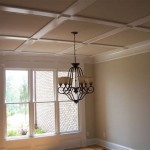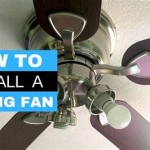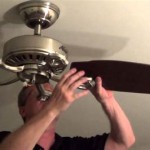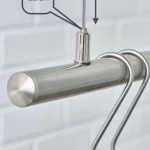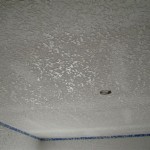## How Do Suspended Ceilings Work? Suspended ceilings are a popular choice for commercial and public buildings because they offer a number of advantages over traditional drywall ceilings. They are easy to install, can be easily reconfigured to accommodate changes in space use, and provide easy access to building services such as lighting, ventilation, and plumbing. Suspended ceilings are typically made up of a grid of metal tracks that are suspended from the ceiling by wires or rods. The tracks support a variety of ceiling tiles, which can be made from materials such as metal, mineral fiber, or gypsum board. The space between the ceiling tiles and the structural ceiling allows for the installation of building services, such as lighting fixtures, air conditioning ducts, and fire sprinklers. The ceiling tiles can be easily removed for access to these services, making it easy to maintain and repair the building. Suspended ceilings are available in a variety of styles and finishes to match any décor. They can be painted or covered with fabric or wallpaper to create a custom look. ### Benefits of Suspended Ceilings There are a number of benefits to using suspended ceilings in commercial and public buildings, including: * **Ease of installation:** Suspended ceilings are relatively easy to install, even in large and complex spaces. The grid system is easy to assemble, and the ceiling tiles can be quickly and easily snapped into place. * **Versatility:** Suspended ceilings can be configured to accommodate any space, no matter the size or shape. The grid system can be cut and reconfigured to fit any space, and the ceiling tiles can be easily removed and replaced to create different layouts. * **Accessibility:** The space between the ceiling tiles and the structural ceiling allows for easy access to building services, such as lighting fixtures, air conditioning ducts, and fire sprinklers. This makes it easy to maintain and repair the building, without having to remove the entire ceiling. * **Acoustics:** Suspended ceilings can help to reduce noise levels in a space. The ceiling tiles can be made from sound-absorbing materials, such as mineral fiber or fiberglass, which help to absorb sound and reduce noise pollution. * **Fire resistance:** Suspended ceilings can be made from fire-resistant materials, such as metal or gypsum board, which help to prevent the spread of fire in the event of a fire. ### Types of Suspended Ceilings There are a variety of types of suspended ceilings available, each with its own unique advantages and disadvantages. The most common types of suspended ceilings include: * **Exposed grid ceilings:** Exposed grid ceilings are a type of suspended ceiling in which the metal grid is visible. This type of ceiling is often used in industrial and commercial spaces, where it can add a modern and industrial look to the space. * **Concealed grid ceilings:** Concealed grid ceilings are a type of suspended ceiling in which the metal grid is hidden behind the ceiling tiles. This type of ceiling is often used in offices and other commercial spaces, where it can create a more finished and polished look. * **Cloud ceilings:** Cloud ceilings are a type of suspended ceiling that consists of a series of individual ceiling tiles that are suspended from the ceiling by wires or rods. This type of ceiling can be used to create a variety of different looks, from a simple and modern look to a more complex and dramatic look. ### Choosing the Right Suspended Ceiling When choosing a suspended ceiling for your commercial or public building, it is important to consider the following factors: * **The size and shape of the space:** The size and shape of the space will determine the type of suspended ceiling that is best suited for the space. * **The purpose of the space:** The purpose of the space will help you to determine the type of ceiling tiles that are best suited for the space. For example, if you need a ceiling that is sound-absorbing, you will need to choose ceiling tiles that are made from sound-absorbing materials. * **The budget:** The budget will also play a role in your decision-making process. Suspended ceilings can range in price from a few dollars per square foot to over $100 per square foot. By considering these factors, you can choose the right suspended ceiling for your commercial or public building.

Suspended Ceiling Installation Ceilings

How To Install A Suspended Ceiling

How To Install A Drop Ceiling 14 Steps With Pictures Wikihow

A Basic Guide To Suspended Ceiling Grids Tiles
How To Install Drop Ceilings Easy Guide Kanopi By Armstrong

A Typical Suspended Ceiling Components 13 B Back Bracing Scientific Diagram

How To Install A Drop Ceiling 14 Steps With Pictures Wikihow

Suspended Ceilings Your Questions Answered

How To Easily Install A Drop Ceiling

Development Of Vibration Control Structure On Suspended Ceiling Using Pulley Mechanism
Related Posts




